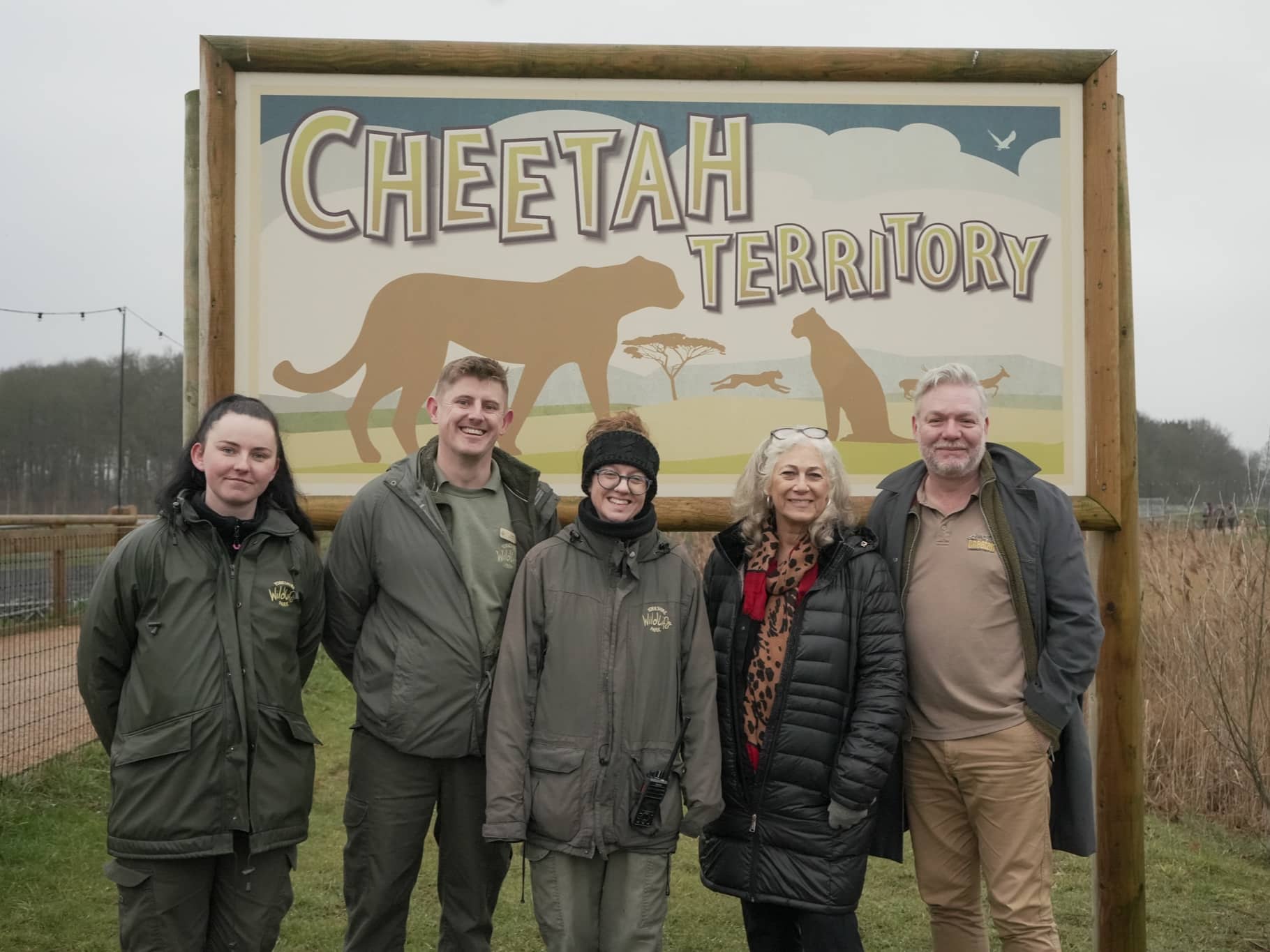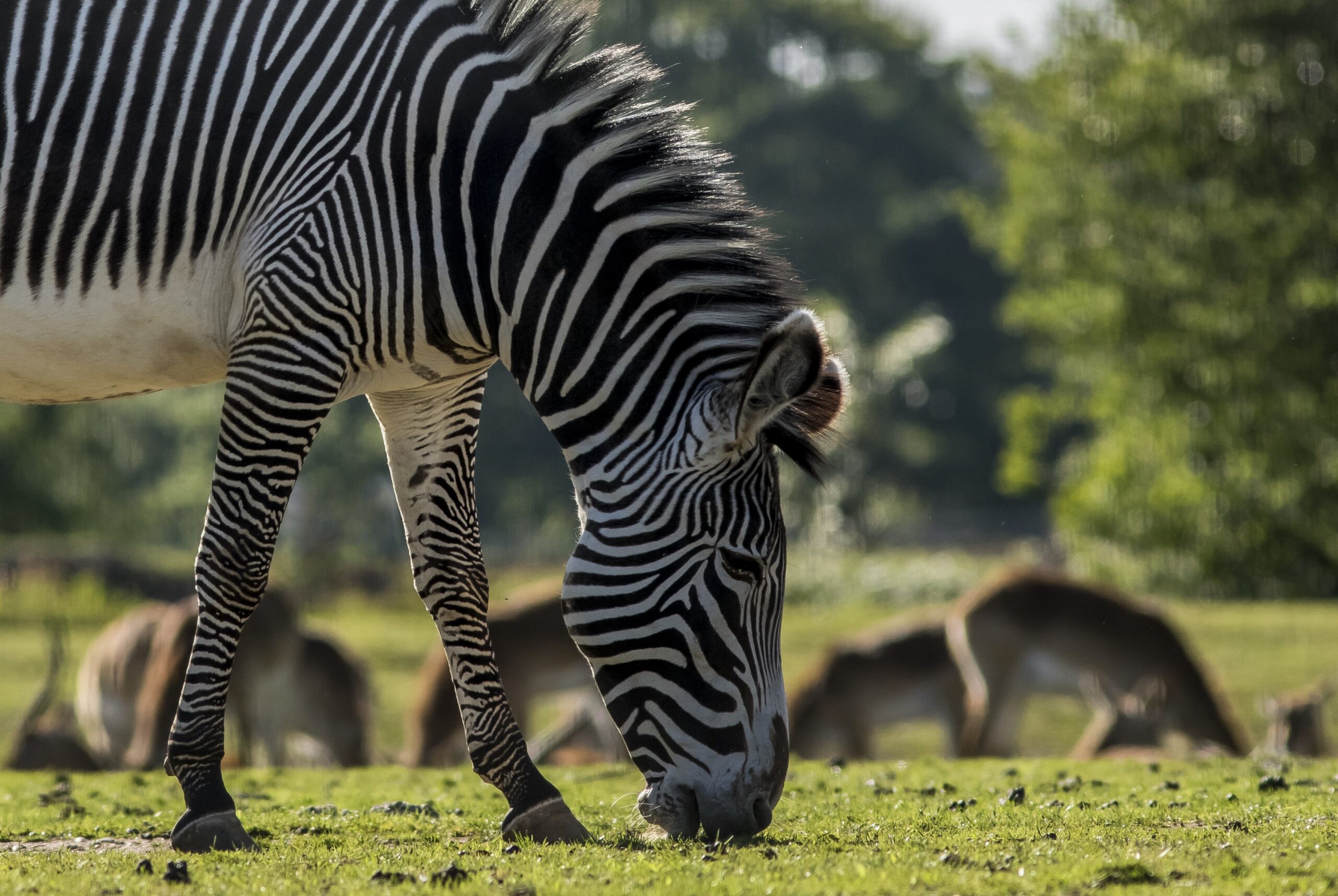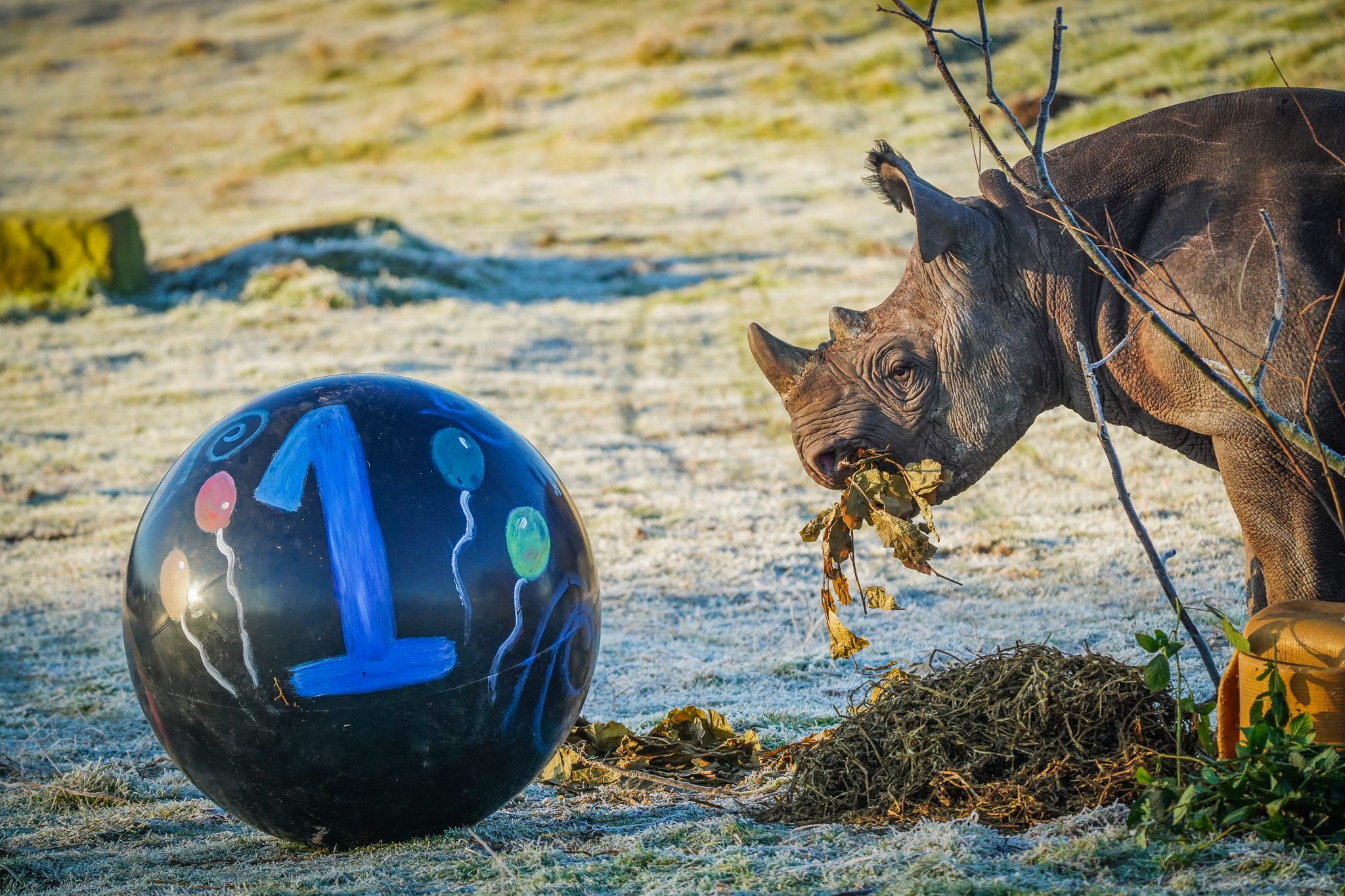[cs_content][cs_section parallax=”false” style=”margin: 0px;padding: 0px 0px 45px;”][cs_row inner_container=”false” marginless_columns=”false” style=”margin: 0px auto;padding: 0px;”][cs_column fade=”false” fade_animation=”in” fade_animation_offset=”45px” fade_duration=”750″ type=”1/1″ style=”padding: 0px;”][cs_text]
Overview
The support of the WildLife Foundation over the past 12 months has assisted in making some very promising headway in the wildlife protection efforts of Chuilexi Conservancy, ensuring it becomes a safer haven for wild dog, lion and other wildlife. Most importantly there have been no further reports of lion poisoning within Chuilexi since scouts detected the incident last year (see report from November 2015) in the neighbouring concession of L9 to the east of the Conservancy.
Also of note, over the last year the scout force has been increased and equipped; the Information Ranger underwent initial training and Chuilexi overall has geared up its monitoring programme with the appointment of Dr Thomas Prin as Monitoring Officer. This has all been complemented by the installation of Chuilexi’s independent radio communications system, which now enables constant contact and tracking of law enforcement personnel. This along with other equipment advances (notably three additional vehicles and an aircraft) are a major boon for wildlife anti-poaching and protection.

[/cs_text][/cs_column][/cs_row][cs_row inner_container=”false” marginless_columns=”false” style=”margin: 0px auto;padding: 0px;”][cs_column fade=”false” fade_animation=”in” fade_animation_offset=”45px” fade_duration=”750″ type=”1/1″ style=”padding: 0px;”][cs_text]
Update on Activities
1. Personnel:
- Over 2015, the Chuilexi Conservancy scout force was increased by 13 personnel to a total of 45. A further 5 scouts are due to be recruited with the advent of the 2016 dry season (from around April/May – December).
- Within this law enforcement division Chuilexi has maintained the Information Ranger, who has received both IT and driving training over the past 12 months. This position is complemented by two radio operators and together, situated within the Ops Room, they are responsible for inputting monitoring data into the Chuilexi database and maintaining constant radio communications with mobile patrols and outposts.
- Chuilexi has appointed a full time Monitoring Officer, Dr Thomas Prin. Recruitment was completed in September 2015 and the work permit process was successfully conducted over October with the position activated on 1st November. Dr Prin has a number of years’ experience in Niassa having conducted his PhD on buffalo within the Reserve. He is also one of the few individuals in the Reserve with intimate knowledge of SMART (Spatial Monitoring And Reporting Tool), which will be implemented over the course of 2016. In addition to wild dog and lion monitoring, a broader monitoring framework is now in place for Chuilexi with SMART as its central component. Other elements include:
- Biannual surveys of known elephant hotspots within Chuilexi to estimate minimum populations
- Photographic monitoring of known elephant carcasses to assess rate of decay and carcass aging – critical for more accurate aging of elephants, particularly from the air and during surveys
- Annual systematic road counts of wildlife to determine distribution, abundance and, in time, trends in wildlife populations
- River surveys by air and by canoe to monitor health and use of the Rovuma and Lugenda rivers through selected indicator species
- Monitoring of the extent of fire across Chuilexi through NASA FIRMS (Fire Information for Resource Management Systems) and MODIS (Moderate-resolution Imaging Spectroradiometer) satellite imagery.
2. Equipment:
- All scouts have been equipped with replacement uniforms, boots and field equipment. Similarly goods are in stock at the Miuro headquarters to fit and equip remaining scout recruits.
- Over the past 12 months Chuilexi has managed to establish its own independent radio communications system. WildLife Foundation have contributed to this and thus Chuilexi Conservancy have been able to:
- Purchase the radio equipment from the supplier, Kinetic Six. (May 2015)
- Secure a further letter of support from the Reserve management authority under ANAC (the Mozambican protected areas authority) to accompany Chuilexi’s radio licence application (June 2015)
- Procure, import and transport the radio masts from South Africa to the Chuilexi headquarters (took place throughout May – July 2015)
- Submit an application to the Ministry of Communications for a radio licence and the allocation of frequencies (June 2015), which were approved and issued in September 2015
- Complete construction (repeater housing, mast installation, and assets and equipment for the protection of the sites) of each repeater station facility on Mapanda and Ulungwe (completed by the end of September 2015)
- An Observation Post was also prepared at the Mapanda site to ensure maximum protection of this facility (as the Mapanda outpost is nearly 4km away). The Ulungwe site is already secured by the very close proximity of the Chuilexi outpost there.
- Equipment was air freighted via Johannesburg to Maputo (November 2015)
- Customs clearance was underway with the consignment finally released in mid-December 2015. It was then air freighted to Lichinga, collected and delivered to the Chuilexi headquarters
- Final installation was conducted, including linking the two repeaters, with the Kinetic Six team in late March 2016
Chuilexi’s radio system has the TRBOnet GPS tracking facility. The base radio is accompanied by a data radio and laptop, which currently tracks the anti-poaching channel so that patrols can be monitored, tracked, logged and fed into Chuilexi’s monitoring database.
After many years of intermittent and patchy radio coverage this system is now a pivotal weapon in Chuilexi’s anti-poaching armory. With the exception of a few small, isolated blackspots (in deeper river valleys and the leeside of some inselbergs) this system now provides coverage to all of Chuilexi. Constant communication can now be maintained with all scout patrols and patrols can be tracked. The latter will be used to monitor and assess patrol coverage over the landscape.
3. Monitoring:
- Chuilexi scouts conducted over 3,000 patrol days over 2015 concentrating on the perimeters, where the poaching threat is highest, namely along the Rovuma, Lugenda and Misangese rivers, which form the northern, eastern and southern boundaries of Chuilexi.
- Data on all carnivores (lion, leopard, wild dog and hyena) were compiled from anti-poaching patrol reports and random sightings – lions were encountered on 36 occasions, with 93 individuals counted; leopards on 4 occasions with just 4 individuals counted; wild dogs on 6 occasions with 56 individuals counted and hyaena on 3 occasions, a total of 4 individuals counted.
- For lion population, the biggest pride had 7 individuals, for wild dog population, the biggest pack had 22 individuals. All wild dog sightings were from vehicles emphasising the difficulty in seeing these animals whilst on foot patrols as they commonly disappear quickly when detecting people on foot.
4. Other Related Developments:
- The Chuilexi crossing has been completed. This was a very significant infrastructure development and has enabled access to the northern half of Chuilexi over the rainy season. With the start of the dry season around now, work is beginning on planned road expansion (see map). This will enable access to un- frequented areas and increase the extent of scout deployment.
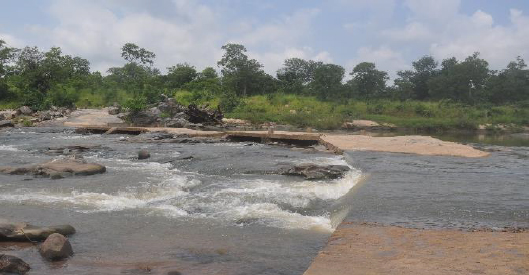
northern half of Chuilexi Conservancy over the rainy season
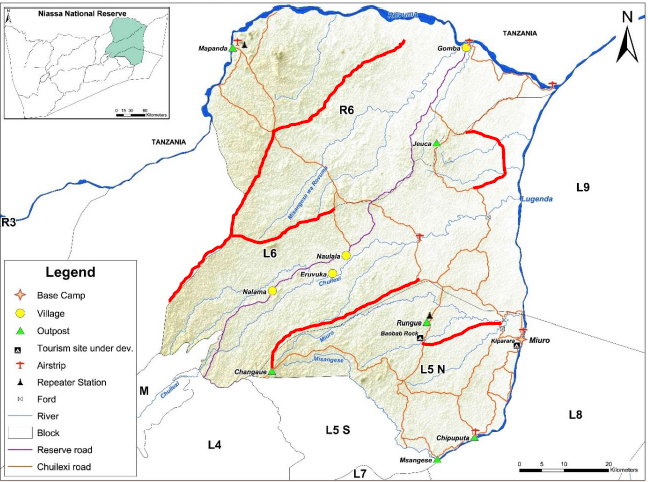
- Chuilexi’s aircraft, a Husky A-1C, registration N244WY, arrived from the US to the port of Mombasa in late January. It was then rail freighted to Nairobi and delivered to Hawk Aviation at Wilson Airport for reassembly, which took place over February/March 2016. The aircraft has now gone through its test flights and is being flown to South Africa this month, where Wim Ebersohn, Chuilexi’s Manager, will complete his type rating. The aircraft will then be deployed to Chuilexi.
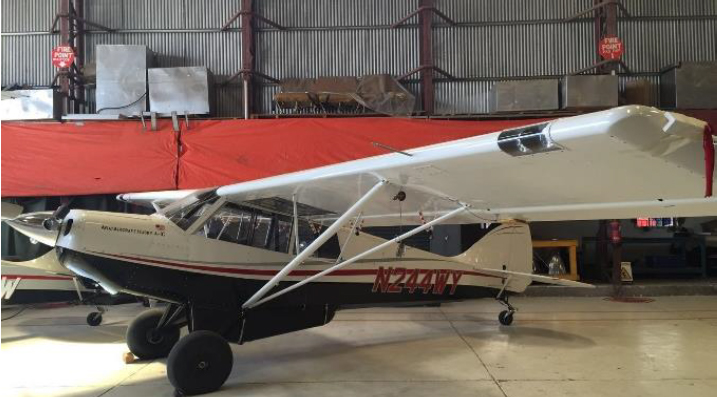
- Three new Toyota Land Cruisers were purchased in September 2015 in South Africa. Due to a significant backlog of orders with the company in Johannesburg that normally carries out and fits the modifications (bulbar, superstructure, canvas etc.) for the Chuilexi vehicles, modification work only began in December. The vehicles are now finally ready for being imported into Mozambique. Renamo (the Mozambican National Resistance – a militant anti-communist, political movement organisation) activities in the centre of the country pose significant risk and challenge to driving the vehicles north up to Niassa Reserve. As an alternative it is likely that the vehicles will be shipped from Maputo to Nacala (a port in northern Mozambique), collected and driven to Chuilexi. The arrival of the vehicles is eagerly anticipated as it will substantially ease the burden on the current fleet of vehicles and ensure dedicated allocation to law enforcement.

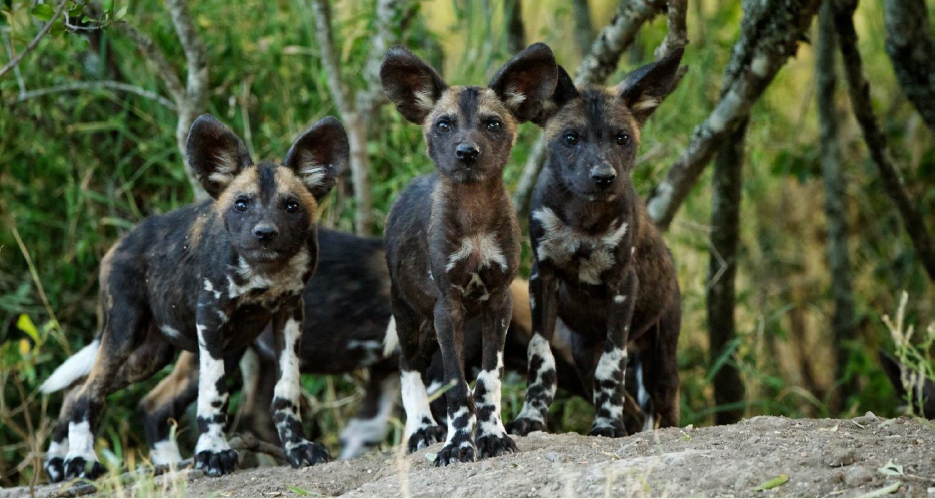
Fauna & Flora International would like to thank the WildLife Foundation for your valuable contribution to the Chuilexi Wild Dogs and Lions project. Your support has been critical to the development and activities carried out over the last year and we look forward to further development over the full project duration.
[/cs_text][/cs_column][/cs_row][cs_row inner_container=”false” marginless_columns=”false” style=”margin: 0px auto;padding: 0px;”][cs_column fade=”false” fade_animation=”in” fade_animation_offset=”45px” fade_duration=”750″ type=”1/1″ style=”padding: 0px;”][x_share title=”Find this post interesting? Share it with friends:” share_title=”” facebook=”true” twitter=”true” google_plus=”true” linkedin=”true” pinterest=”true” reddit=”false” email=”true” email_subject=”Hey, thought you might enjoy this! Check it out when you have a chance:”][/cs_column][/cs_row][/cs_section][/cs_content]





